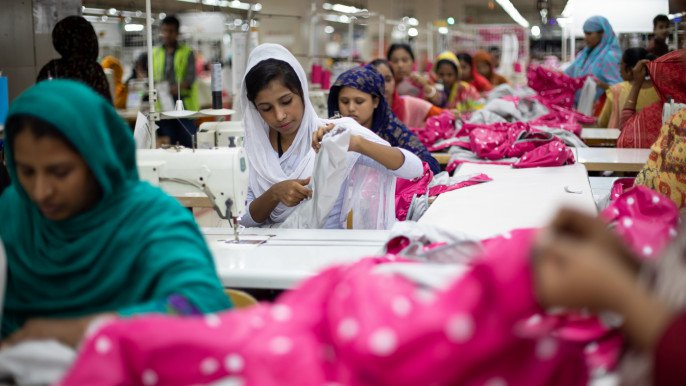Published in the Financial Express on 6, May, 2017

Jasim Uddin Haroon
The government has slashed projection for merchandise exports by 3.0 percentage points to 7.0 per cent for this fiscal, which suggests the country may miss its US$37-billion export target.
Analysts think this downward revision will also result in a sizable shrinkage of government earnings derived from export proceeds to the tune of over $230 million a year considering 0.7 per cent growth in export receipts.
Besides, the export tariffs which are usually imposed on some items like tobacco exports also started to shrink as a result of continued fall in the overall exports.
The export trade grew by only nearly 4.0 per cent to $25.95 billion during eight months to February last. But it had expanded nearly 9.0 per cent during the same period a year back, official documents show.
Economists familiar with such developments on the trading front told the FE that the export would continue to fall and the growth rate may stand around 5.0 per cent at the end of the financial year on June 30 as the country failed to retain its position on the global market.
They said the recent depreciation of the local currency against the US dollar may give a little cushion to the export-earning sectors.
They were critical of the rise in the real effective exchange rate (REER) blamed on a sharp decline in the export earnings which usually grow by double digits.
Dr Zahid Hussain, lead economist at the Dhaka office of the World Bank, told the FE that weak economies both in the USA and the European Union (EU) hit Bangladesh’s export sectors as the demand for clothing and other products dived in the two main destinations.
“The slow economy of the USA coupled with the EU has impacted on Bangladesh,” he said, adding that the country lost competiveness to a large extent as a result of appreciation of the REER.
According to a calculation Bangladesh’s REER appreciated over 6.5 per cent in December 2016 against December in 2015.
REER considers inflation in the trading partners, and if the REER appreciates, it adversely impacts on the export receipts.
The WB economist said cost of doing business in Bangladesh remained high, leading to the shrinking of chance of export diversification.
Dr Hussain, however, cautioned that the country now maintains stability in the foreign-exchange regime as any volatility results in uncertainty in the overall economy, including external sectors.
Dr Ahsan H Mansur, executive director at the private think-tank Policy Research Institute of Bangladesh (PRI), told the FE that Bangladesh has failed to retain its position on the international market on many grounds that include appreciation of its currency against its competing countries.
He noted that exports from China and Vietnam to both the USA and the EU have been growing fast.
The economist said some local exporters have strategic partnership with Turkish entrepreneurs. Bangladeshi exporters used to send to Turkey and later the goods were shipped to western economies with additional value addition.
The Turkish economy has now been weak following a number of terrorist attacks coupled with Turkey’s self-imposed anti-dumping duty on some countries, including Bangladesh. And that led to fall in exports to that country.
He, however, said the recent depreciation of Taka against the dollar may give some benefits by way of a raise in competiveness of the exporters.
Some people at the ministry of commerce told the FE that the government has set the target at $37 billion in a trading environment which was fundamentally different from the one developed in almost last one year.
They said Bangladeshi exporters are struggling in a difficult trading environment where global trade has contracted and most of the countries with similar product-mix have suffered a decline in exports,
“Due to the multiple exogenous and endogenous factors we think that an adjustment in the export targets would have been made,” said an official at the state-run Export Promotion Bureau.
The government is trying to ease the pressure on the export sector through multiple measures like improving access to energy. They argued lower interest rates are raising their competiveness.
They said the government has been providing on average Tk 40 billion as cash incentives to boost export each year.
However, a trade analyst said the exports are falling because of structural weaknesses along with global reality.
“With the current trend in trade, the country might not even touch the export figure of $35 billion this year,” said the analyst.
Bangladesh clothing exports constitute over 80 per cent of the country’s total exports and woven-garment export expanded by 0.83 per cent during July-February period of this year.
Knitwear export expanded by over 5.0 per cent during the period under review. Only export of jute and jute goods has grown nearly 10 per cent during the period.
Until February last, export to the United States had fallen by 6.0 per cent in contrast to a rise by 4.4 per cent to the EU market.
 CPD RMG Study Stitching a better future for Bangladesh
CPD RMG Study Stitching a better future for Bangladesh



